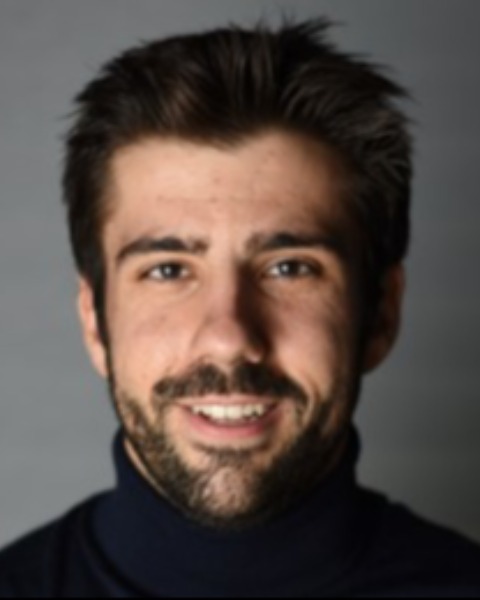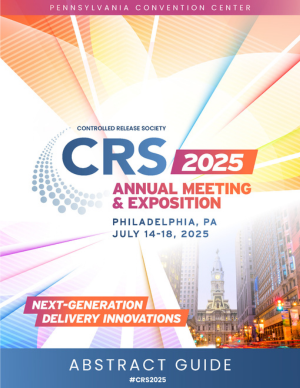Nanomedicine and Nanoscale Delivery
Imaging in Drug Delivery
Tech Session II: Nanomedicine and Nanoscale Delivery (Focus: Imaging)
Auger electron-emitting theranostic micelles for image-guided radio-chemotherapy
Tuesday, July 15, 2025
3:49 PM - 4:00 PM EDT
Location: 121 B/C
Introduction: Radio-nanomedicine (combining nuclear medicine and nanotechnology) is an emerging field in nuclear imaging and therapy.[1] BRCA-mutated triple negative breast cancer is highly aggressive, resistant and prone to metastasis. In this context, combining poly(ADP-ribose) polymerase inhibitors (PARPi) and Auger electron-emitting (Auger-E) radiotherapeutics holds promise.[2] Yet, their effectiveness and translation are hampered by tracer instability and low tumor accumulation. We develop a micelle platform co-delivering Auger-E and SPECT-imageable PARPi for tumor-targeted radio-theranostics (Fig.1A).
Learning Objectives:
At the completion of this activity, participants will know
- Assess the potential of Auger electron emitting-based radio-nanomedicines for (BRCA-mutated) cancers
- Evaluate the relevance of nuclear imaging in tumor-targeted and image-guided radio-chemotherapy
- Describe the impact of nanomedicine-based co-delivery for PARP-targeted radionuclide theranostics
Laura Schäffer – PhD Student, RWTH Aachen University Hospital, Department of Nuclear Medicine; Alec Wang – PhD Student, RWTH Aachen University Hospital, Institute for Experimental Molecular Imaging; Alexandru Florea – Dr. Dr. med., RWTH Aachen University Hospital, Department of Nuclear Medicine; Elea Henrard – Student, RWTH Aachen University Hospital, Department of Nuclear Medicine; Zheran Lu – PhD Student, RWTH Aachen University Hospital, Department of Nuclear Medicine; Eva Buhl – Dr. rer. nat, Electron Microscopy Facility, Institute of Pathology, RWTH Aachen University Hospital; Marcus Frings – PhD Student, Institute of Organic Chemistry, RWTH Aachen University, 52074 Aachen, Germany; Carsten Bolm – Professor, Institute of Organic Chemistry, RWTH Aachen University; Felix Mottaghy – Professor, RWTH Aachen University Hospital, Department of Nuclear Medicine; and Maastricht University Medical Center, Department of Radiology and Nuclear Medicine; Twan Lammers – Professor, RWTH Aachen University Hospital, Institute for Experimental Molecular Imaging; Agnieszka Morgenroth – Dr. Dipl.-Biol., RWTH Aachen University Hospital, Department of Nuclear Medicine

Quim Peña, PhD (he/him/his)
Junior Group Leader
RWTH Aachen University Hospital, Institute for Experimental Molecular Imaging, Germany

